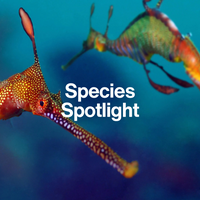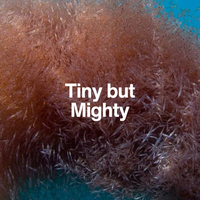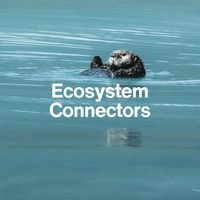The Ancient Architects of Life
Cyanobacteria

Before trees, whales, or even fish—there were cyanobacteria. These oxygen-producing microbes made our planet breathable and still power the ocean today.
Introduction
Microscopic but Monumental
Cyanobacteria, also known as blue-green algae, are among Earth’s oldest living organisms—dating back over 3.5 billion years. These photosynthetic bacteria helped create Earth’s oxygen-rich atmosphere and remain key players in marine productivity today.
Though tiny, they form vast oceanic blooms that feed food webs, support carbon cycling, and help regulate global climate. In every drop of seawater, their quiet work continues.

Ecological Role
The First Oxygen Makers
Oxygen Pioneers
Cyanobacteria perform photosynthesis, using sunlight to turn carbon dioxide into energy and oxygen—just like plants.
Ocean Bloom Builders
They form enormous blooms in nutrient-rich waters, supporting entire food chains from plankton to fish.
Nitrogen Fixers
Some cyanobacteria convert atmospheric nitrogen into forms usable by marine life, enriching low-nutrient zones.
Climate Regulators
Through carbon uptake and oxygen production, they influence Earth’s climate and habitability.

Fun Fact
Cyanobacteria are so resilient, they’ve been found thriving inside Antarctic rocks and in desert crusts—and some species have even survived exposure to space!
Biology & Behaviour
Simple Cells, Complex Legacy
Cyanobacteria are unicellular or filamentous prokaryotes (no nucleus), yet their simplicity hides massive influence.
- Thrive in sunlit surface waters, estuaries, and even polar regions
- Reproduce rapidly, sometimes doubling in hours during blooms
- Use pigments like chlorophyll and phycocyanin for photosynthesis
- Some form colonies or filaments; others float freely
- Can survive extreme heat, salinity, and dryness—some are found in deserts and hot springs
They are evolutionary survivors and biochemical powerhouses.

Threats & Challenges
When Blooms Go Bad
Cyanobacteria are vital—but excessive growth can cause harm. Major issues include:
Climate change
warmer seas and altered currents may trigger more frequent, intense blooms
Harmful Algal Blooms (HABs)
toxins from bloom-forming cyanobacteria can poison marine life and contaminate seafood
Eutrophication
fertiliser runoff fuels explosive growth, depleting oxygen and creating dead zones
UV Exposure
thinner ozone can damage DNA, though many cyanobacteria have built-in repair systems
Did you know?
Cyanobacteria created the first “Great Oxygenation Event” around 2.4 billion years ago—transforming Earth’s atmosphere and enabling complex life to evolve.
Why They're Mighty
Ancient and Essential
Cyanobacteria show us that the tiniest forms of life can leave the biggest legacy.
They’ve shaped Earth’s past, oxygenated the sky, and continue to sustain the sea. Every breath we take is a reminder of their power—and every ocean bloom proves they’re still in charge.

Key Takeaways

NEXT SPECIES
Meet the Ocean’s Youngest Drifters: Larval Fish
They’re not just baby fish—they’re the future of the ocean. Next up: discover how larval fish grow, drift, and shape the survival of entire species.




